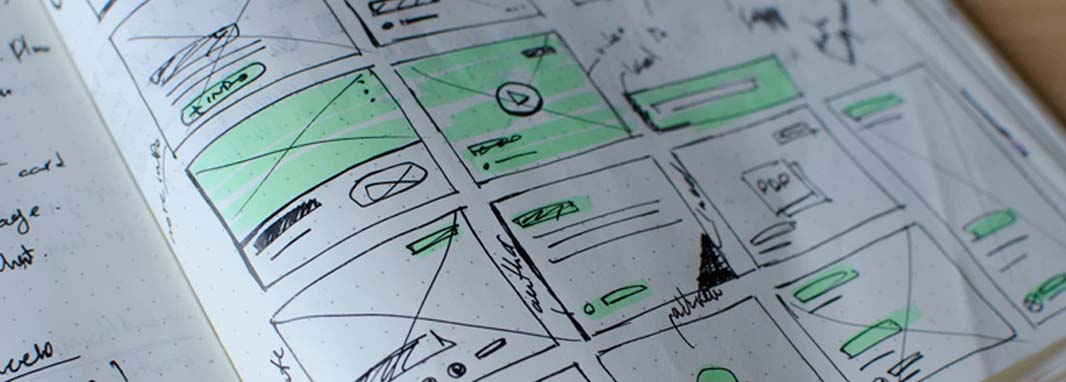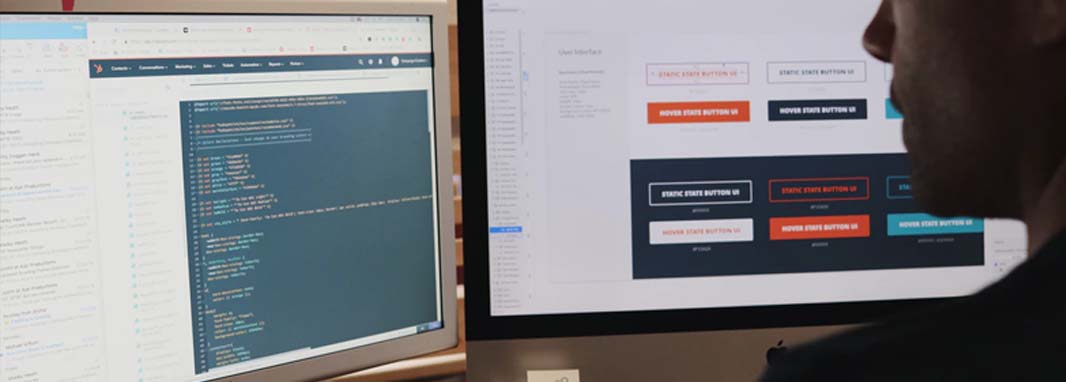Most B2B customers prefer to purchase online directly from vendors. 93% of them look for the same smooth e-commerce experience as they have with B2C e-commerce websites.
That’s why the burgeoning field of B2B e-commerce website development is set to continue to rise in the coming years. According to Forrester forecast, the total share of B2B sales that are made through an e-commerce site is expected to grow from 9.7% in 2015 to 13.1% by 2021, amounting to a total of $1.8 trillion by 2023.
B2B e-commerce website design is all about catering to this preference by simplifying the process for buyers and forming new business relationships. And so with that in mind, today we’ll be sharing our simple ten step approach to B2B website development.
What is the difference between B2B and B2C e-commerce?

B2C and B2B solutions e-commerce sites have plenty of similarities and few differences. In fact, the biggest difference between the two is the type of product that’s sold, as many B2B companies provide services as opposed to products. This doesn’t mean that e-commerce doesn’t work for B2Bs, though – they just need to rethink what an e-commerce framework site actually is.
B2C e-commerce tends to be more visible, and brands can take advantage of user-generated content to show real products being used by real people. The good news is that B2B e-commerce companies can make up for this by integrating testimonials and customer reviews and looking for other ways to bring in an element of social proof to encourage people to make a purchase.
Quick facts about building a B2B online store

It’s worth noting that B2B and B2C e-commerce sites both cater to real people, and so instead of business-to-business, it’s actually human-to-human. The same techniques apply, from calls-to-action and related product recommendations to automated emails when people fail to see their purchase through the checkout process.
Still not convinced about building a B2B e-commerce store?
The metrics don’t lie, and there is no shortage of successful case studies that show the power of B2B e-commerce in action. Just a few of the most telling statistics are shown below:
89% of B2B buyers go online to find products they need;
73% of B2B buyers google for new products for their business;
57% of B2B purchase decisions are made before submitting the request;
76% of B2B buyers say site design is the most important factor to a buying decision;
Only 5% of B2B buyers’ decisions are influenced by social media;
10% is the average B2B wholesale buyer conversion rate, compared to 3% for B2C
All of these statistics, combined with the ever-growing size of the industry and the increasing demand from consumers for B2B marketplaces, ensure that B2B e-commerce sites aren’t just the latest trend. They’re a way to futureproof and to ensure that your company continues making money in the future. You can use B2B Ecommerce Website Development for this purpose.
Check How to Create an Ecommerce Site Like AliBaba
How to develop a B2B online shop
Step 1: Get business and IT on the same page

There’s a reason why this is the first step on our list. You need to match your technology requirements with your business needs early on in the process so that everyone’s working towards a common goal.
That way, you won’t waste time and money on bells and whistles while missing out on key features that could increase your ROI. So, if you want to strategize your eCommerce sales funnel, every step should be optimized to drive conversions effectively.
Step 2: Gather requirements
The next step towards developing a B2B e-commerce platform is to gather the project’s requirements and to use them to develop a brief. The requirements of the project determine the response that you can expect to receive because the input decides the output. Be sure to consider requirements both from your own point of view and from the point of view of your customers.
Step 3: Build use cases

Building on from the last point, you’ll find that the hardest part of B2B web development is identifying the use cases that your potential customers will have. Remember that B2B customers shop in exactly the same way as B2C customers – after all, they’re still people. Try to put yourself in the shoes of those people and to understand what they’re looking for when they arrive at your website. If you want to make the user experience smoother, try website localization. This means adapting your website's visuals and content to meet the language preferences and regional needs of your visitors.
Step 4: Choose the platform
Different platforms work better in different situations, and so it’s also worth considering Big Commerce, Shopify, Magento, Woo Commerce, X-Cart, Zen Cart and even Wordpress. We prefer Magento Development's open source B2B platform because of its versatility and ease of use. But still you can use other platforms. Different platform different opportunities, for example look this comparison of Magento vs. Shopify.
Step 5: Hire a development team

Your development team will be tasked with turning your vision into a reality, so make sure that they understand who you’re trying to reach and what actions you want them to take.
Communication will also be key, so when you’re auditioning potential partners, be sure to pick one that’s responsive to your emails and eager to answer any queries that you have.
Outsourcing development to a company like Digital Silk is the ideal way to save money and time on the project. When you outsource this element of the project, be clear about what you want and what you need to avoid mistakes.
Step 6: Choose a theme
Most of the top B2B e-commerce platforms have different third-party themes available which can help you to customize the site’s look and feel. Some are free, while others require a one-off license fee. Don’t be afraid to spend a little money on your theme and even to ask your developer to further tweak it if needed.
Step 7: Integrations

If picking a theme is all about customizing the look and feel, then choosing your integrations is like changing the way that it actually behaves. For example, because Magento is an open source B2B e-commerce platform, there are numerous third party integrations covering everything from payments and terms and conditions to shipping, marketing and more.
Step 8: Check SEO metrics
There’s a big difference between a B2B website development company and an SEO agency. That’s why it’s usually a good idea to work with both, especially if you don’t have in-house technical SEO expertise then you can hire best SEO agency such as Attrock. Before you launch, make sure that you’ve filled out meta titles, meta descriptions and alt tags and that you’ve adhered to SEO best practices. And once you’ve launched the site, be sure to make sure that it’s visible to search engines.
Step 9: Go live
When your website goes live, it can be tempting to launch it in a blaze of glory. As a general rule, though, it’s better to opt for a soft launch to begin with so that you can look out for unexpected errors. You can also monitor metrics like bounce rate and conversion rate to identify whether specific steps in the checkout process are causing people to click away. By opting for a soft launch, you can iron out these teething problems and then launch your advertising and marketing efforts once you know the site’s ready.
Step 10: Regularly update it and check for bugs
Once your website has been launched, you’re only just getting started. It’s not enough to simply create a site and to release it into the world. You also need to commit to carrying out regular updates, whether that’s in the form of new service offerings or in the form of fresh content. You’ll also want to continue the bug testing that you started in the last step.
Final thought

The goal of your B2B e-commerce site should be to provide B2B services but in a way that feels like B2C. This includes by providing all of the functions that B2C shoppers have come to know and love, from special offers and unique discounts to recommendations and the ability to browse different products and services.
Remember that simply creating an e-commerce site is no longer enough, even when it comes to the B2B market, which is slightly less competitive than the B2C marketplace, where everyone is in competition with Amazon. Even the best B2B e-commerce sites didn’t become successful on their own merit.
That’s where marketing and advertising comes in, even if it’s only to bring in the first few users. If your site is good enough – if it’s interactive, engaging and fully stocked with all of the services your customers need – then they’ll sell it on your behalf. You can even offer encouragement with affiliate programs and referral fees. Affiliate marketing experts often advise to explore successful strategies by looking into referral examples to optimize your referral programs for maximum effectiveness.
Ultimately, B2C and B2B solutions e-commerce are similar enough that the two disciplines can learn a lot from each other. They’re also different enough that what works for one won’t necessarily work for another. The best way to find out what works for you is to try new things and to measure the results. Good luck.
Still need help wrapping your head around B2B e-commerce? Don’t suffer in silence. Here at Zfort Group, we build websites so you don’t have to. We start by getting to know you and your customers and walk you through the process to make your website the best it can possibly be. So if you’re on the market for a new B2B e-commerce site and you’re not sure where to turn, get in touch with us to find out more. We’ll be happy to help!





